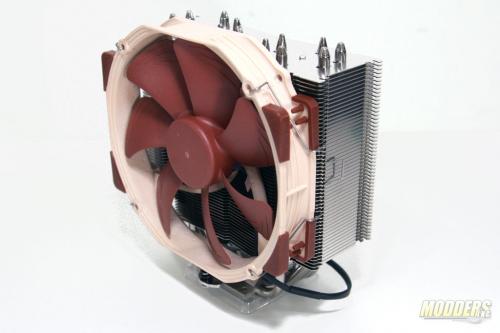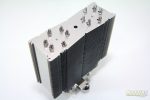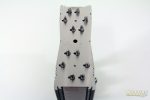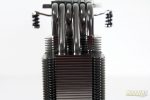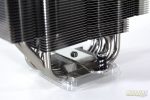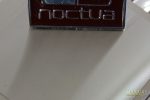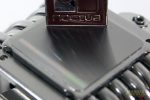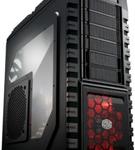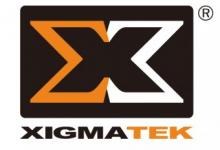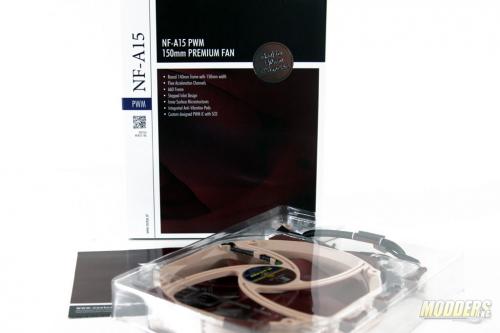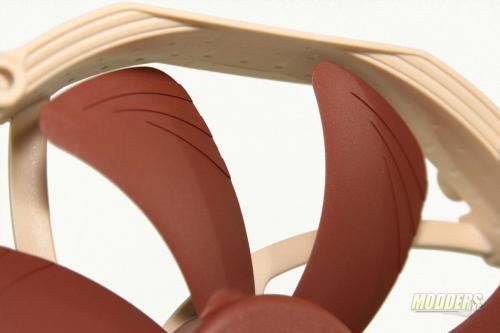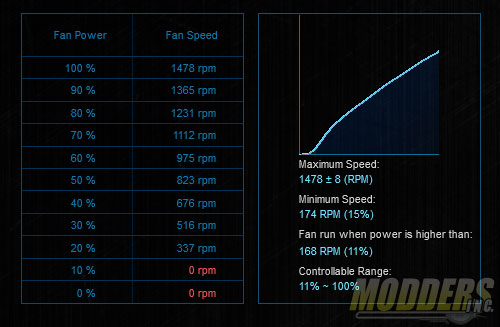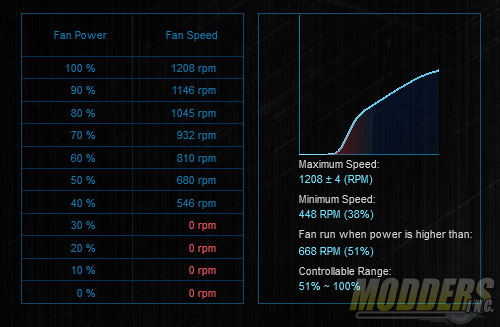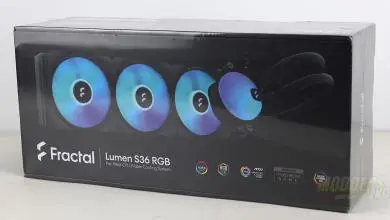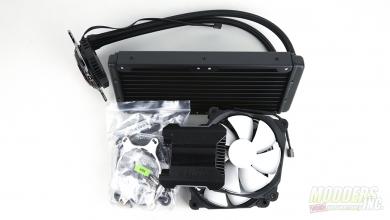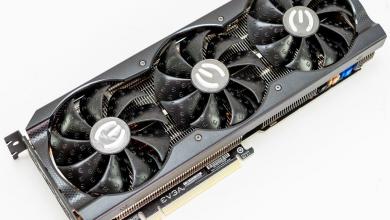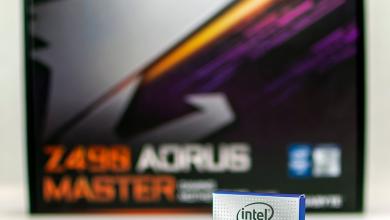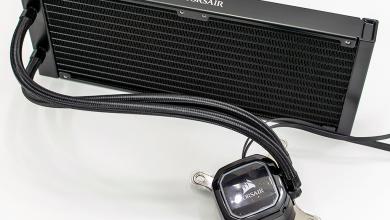Noctua NH-U14S CPU Cooler Review: An Exercise in Efficiency
A Closer Look at the Noctua NH-U14S
Measuring 165 x 150 x 52 mm (H x W x D), the Noctua NH-U14S is designed with to be a slimmer-bodied heatsink with superior RAM compatibility compared to the dual-towered NH-D14. The six 6mm heatpipes distribute heat to 57 aluminum fins stacked tighter at ~1.7mm compared to the NH-D14’s ~2.3mm aluminum fin spacing. To aide with clearance, the bottom six aluminum fins are not extended fully to the 150mm length. Because of the tighter space, the six heatpipes are distributed in pairs, two on the outside, two in the middle and two on the inside forming a pair of semi-circles on the left and right unlike the NH-D14 arrangement which have all the heatpipes aligned straight in a row and unlike the NH-U12P which have all the heatpipes bunched up in a column. The fin design has also changed to help with thermal efficiency as well as lowering turbulence. The fins slope into a center point to minimize airflow dead zone caused by the center fan hub.
To complete the NH-U14S’s premium feel, Noctua nickel-plated the six 6mm copper heatpipes which are soldered cleanly to the nickel-plated base. Unlike most heatsinks, the finish is very clean and there are no flux residues in the contact area. The CPU contact surface measure 38x40mm, flat on all four sides and is not highly polished but has visible rounded micro-machining marks which makes it ideal for higher viscosity thermal compounds. This surface area also makes it large enough to handle the LGA2011 integrated heat-spreader which measures 38x38mm. The mounting bracket is already pre-attached to the base via a middle screw which can be removed if needed such as in the case of a future socket change. A cut-out in the middle of the heatsink provides access for the bundled screw driver for this integrated backplate removal. Four mounting holes at the base may be unnecessary now, but will facilitate attachment of compatible mounting hardware with future motherboard mounting-hole standards in the future.
The bundled fan is an NF-A15 fan which has a 140mm frame but has dual mounting holes for standard 140mm and 120mm with 105mm spacing. It comes pre-installed and thus already comes with a pair of wire fan mounting clips.
An additional NF-A15 can be purchased for around $25-$30 USD and has slight differences with the bundled NF-A15. Each retail NF-A15 comes with a 300mm extension cable, 4-pin Y-splitter cable, a low-noise adapter and four vibration dampening rubber screw-replacements. Anti-vibration pads are already pre-installed on the corners but can be easily removed or replaced.
Both fans NF-A15 fans feature the latest in Noctua fan technology including SSO2 bearing, inner surface microstructures, stepped-inlet design, and flow-acceleration channels. SSO2 stands for 2nd generation Self-Stabilizing Oil-pressure bearing technology which is essentially an oil-based hydrodynamic bearing with a self-stabilizing magnet in the rear of the brass bearing shell. The stepped-inlet design of the frame allows more air to be drawn in while the flow-acceleration channels on the seven-bladed NF-A15 works in conjunction with the inner-surface micro-structures to improve airflow while minimizing noise caused by turbulence.
While the bundled NF-A15 runs at a maximum of 1500 RPM, the retail NF-A15 only runs at a maximum of 1200 RPM. This disparity is not an issue and has been taken into account by Noctua as mentioned in the manual. The bundled low-noise adapter can be used on the front 1500 RPM fan intake should users want to run two fans at an identical 1200 RPM. If attaching a second NF-A15 fan, make sure to attach the thicker corner dampening pads so there is greater distance between the rear “pull” NF-A15 fan and the NH-U14S heatsink or else, there will be a high-pitch noise generated when running at maximum RPM. Lowering the rear NF-A15 fan speed can also lower this high-pitch noise. This noise is caused by air turbulence rather than vibrations.
ASUS Fan Xpert 2 Results for the bundled NF-A15 fan:
ASUS Fan Xpert 2 Results for a retail NF-A15 fan:
